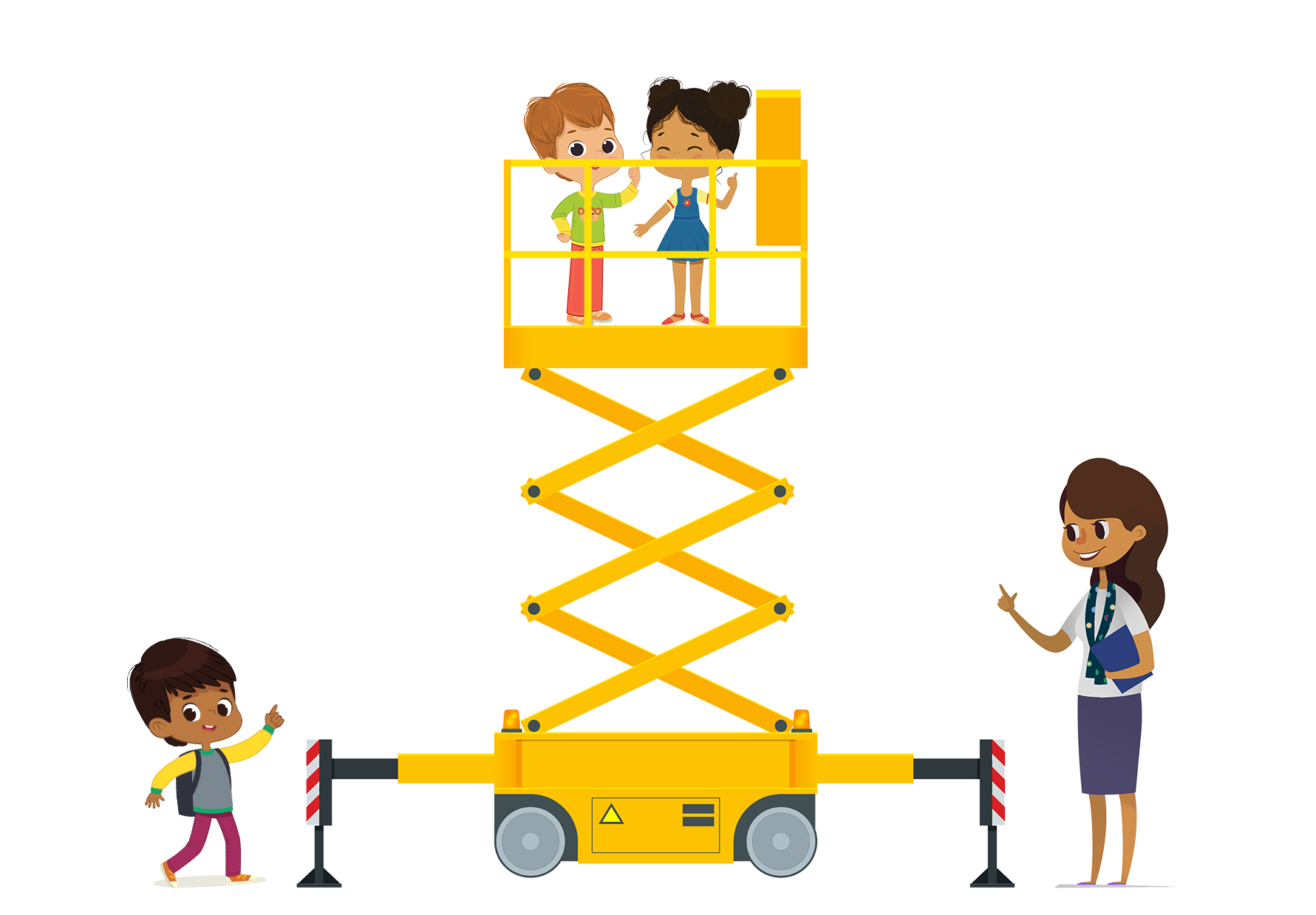Author: cheqdin
Published Date: August 23, 2021
It seems like there are countless teaching methods designed to help children navigate what they learn thoroughly and effectively. Understanding these methodologies can help us integrate different techniques simultaneously and deciding when they should be implemented singularly. A standard method, called scaffold learning or Montessori scaffolding, is often found in early years education. While every educator will develop methods or theories that work for their centre, the scaffolding method is a child-led learning approach that needs to be considered.
Understanding Montessori Scaffolding in Early Years Education
Just as scaffolding in construction is designed to be temporary support while individuals repair, build, or clean a structure, this educational method takes a similar position. In early years childhood education, it takes a variety of instructional and supportive techniques to help young students. There is a strong focus on developing greater independence; after all, the design is meant to be a temporary technique, not a long-term reliance.
How is the Scaffolding Method Used?
With the fundamental core belief that children can understand and comprehend information when given support while learning, the scaffolding method can be applied to various areas. Scaffolding helps break down education into smaller, easy-to-digest steps. We want to build on already known concepts, creating milestones children can do themselves (or something just beyond what they can already do).
The scaffolding method can be used while implementing new ideas or skills. It can also help struggling students bridge the gap for complex concepts. Over more extended periods, the child builds critical skills needed and develops confidence while learning. As a key component to education, three elements are required for the student’s success.
1. Modelling the skill: The educator shows the student a new skill through modelling methods. An example could be guiding a student on how to stack blocks, thread a needle, or draw a straight line. The student is then allowed to try the skill themselves.
2. Asking Appropriate Questions to the student or offering clues for success: When a student is struggling, the educator takes an outside perspective on the situation. The solution mustn’t be given at this time, but offering thought-provoking questions is encouraged.
3. Withdrawing support: As the child understands the skill, removing the initial support will reinforce the learned behaviour. Remember, scaffolding offers temporary assistance while developing new skills.
Different Opportunities to use the Scaffolding Method
The scaffolding method isn’t a linear plan that requires specific steps to be successful. Scaffolding is often fluid and integrated during play, without children feeling pressured. There are a variety of techniques a teacher or educator can use when employing the method, including:
1) Using Demonstrations
While the child participates in the activity, the teacher can use similar objects to demonstrate completing the task. For example, an educator may use their own needle and thread to show how to thread the yarn through. Another example could include building a small tower to demonstrate block building to a student.
2) The Educator Begins by Offering Suggestions or Hints
The idea behind scaffolding isn’t to offer complete solutions but assisting the struggling student can reinforce their learning objectives. Offering partial hints or ideas to help them complete the task can reduce stress and potential frustration. Include the child in the conversation and ask them for additional ways to solve the problem too.
3) Setting the Child Up for a Win
Rather than posing open-ended or abstract questions, an educator can improve the child’s success by offering multiple-choice questions to lead them to a successful answer. These questions reinforce the child’s understanding by probing for the correct sequence of events or activities.
4) Reinforce Skills with Praise and Encouragement
Improving a child’s confidence is a critical component of the scaffolding method. The praise doesn’t have to be excessive but should be offered when the task is completed or attempted. This direct feedback reinforces the skills and can improve self-competence.
How to Use the Montessori Scaffolding for Extended Skills
When a child is immersed in the activity, adding additional layers of development through powerful questions can push the envelope of their developed skills. Some children will be more receptive to specific questions, and it’s important to recognize when these can be implemented successfully.
What happens when we do this _______?
If an educator hopes to add a demonstration or additional prop into the play, this question is the perfect connection between the two. This statement aims to extend the play and allow the student to connect and interpret what’s happening.
What do we know about “activity” now?
This question can help a child solidify the skills they’ve learned while also reinforcing what occurred during play. This question allows the student an opportunity to reflect on the activity, including any failures, setbacks, and successes.
What are you thinking?
One of the simplest ways to expand a child’s existing knowledge or skillset is through asking. Pay attention to any additional areas of learning that could occur, whether that includes an ongoing progression or a complementary skill.
Is there anyone you’d like to share this with?
As a child begins to develop and master a set of skills, encouraging peer-to-peer learning is always beneficial. Alternatively, you could suggest a family member or close contact. By recounting what they experienced, they will reinforce the skills learned while positively connecting with the experience.
Where can Scaffolding Be Applied in Education?
The scaffolding method can be applied to virtually every component of learning in an early years setting. Scaffolding can be used singularly or in combination with other learning methods. It works to provide support and encouragement to students without offering a direct answer. This method can include life skills (like tying shoes or getting dressed), gross motor skills, fine motor skills, and literacy. Likewise, scaffolding methods can be implemented in numeracy too. The main objective is providing support, encouragement, and praise through education, building confidence and self-competence as the skillset improves.


